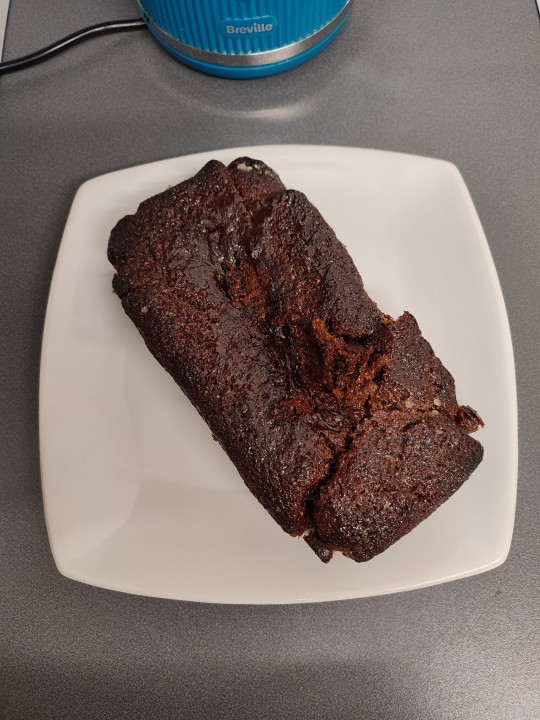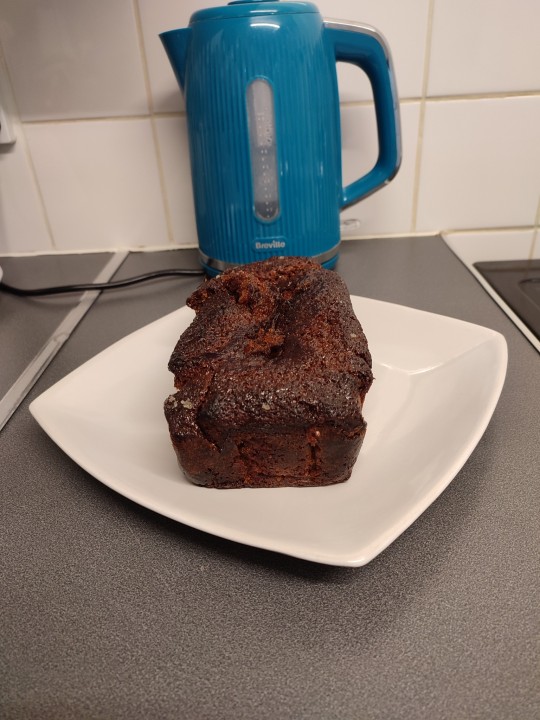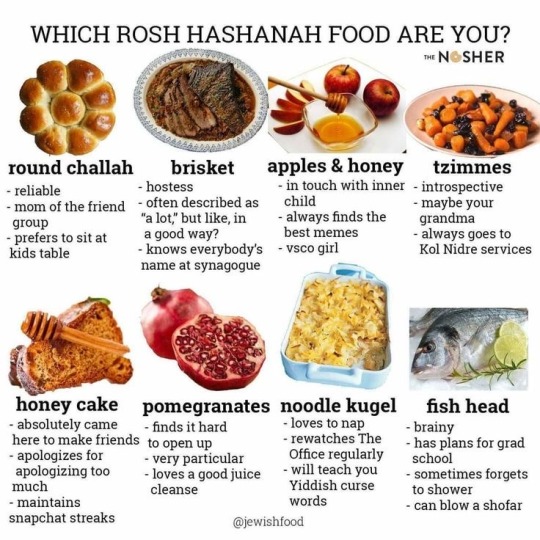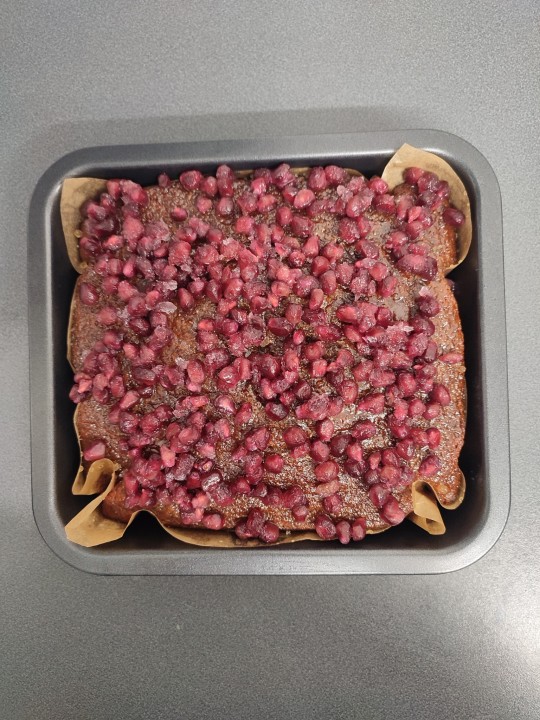#jewish honey cake
Text



My first attempt at lekach, even though Rosh Hashanah was long ago. I made it with coffee, as a test run. Depending on who has it, I will alternate between making it with tea and coffee.
1 note
·
View note
Text
Jeremy Heere and Jared Kleinman are celebrating Rosh Hashanah this weekend
#imagine if they were in the same universe then their familes would be having a meal together#they need to get their Rosh Hashanah doses of honey cake#be more chill#bmc#deh#dear evan hansen#jeremy heere#jared kleinman#im jewish#i'm jewish#jewish#happy rosh hashanah#rosh hashanah#musicals#broadway
54 notes
·
View notes
Text

ROUND
#didn't get pictures of the rest of dinner but i also made potatoes & garlic and wild rice soup w/ dumplings and honey cake#and it was all very tasty#shana tova all!!!#jewish tag
52 notes
·
View notes
Photo

Honey Cake
#honey cake#honey#cake#jewish#food#dessert#baking#recipe#cake loaf#rosh hashanah#dairy free#apple#autumn#fruit#citrus#orange the fruit#bellyfull
238 notes
·
View notes
Text
Life hack for anyone who wants to make honey cake for the upcoming Yamim Noraim but isn't good at baking or is short on time:
Just buy spice cake mix and then add generous amounts of honey to the batter and bake it. That's it. Mazal Tov, you have delicious honey cake now.
Shana Tova!
#yamin noraim#high holidays#jewish food#honey cake#baking#rosh hashana#yom kippur#sukkot#baking hacks#jumblr#Judaism
214 notes
·
View notes
Text

Vegan Rosh Hashanah Honey Cake
#vegan#desserts#jewish cuisine#rosh hashanah#veganized#honey cake#spelt flour#flax seeds#maple syrup#cinnamon#ginger#cloves#allspice#applesauce#vanilla#almonds#olive oil
10 notes
·
View notes
Text

9 notes
·
View notes
Text
trying to make a medieval honey cake . . . . . im so sorry to the jewish people i now understand how hard you all have had it for centuries im so sorry
#THIS IS HARD!!!! THERES THREE INGREDIENTS AND ITS SO HARD!! when is it ready???!??!!?!?!?!?!?!?#i apologize for all antisemitism ever spoken by my relations#specifically this is a jewish recipe recreated partially from a book of ashkenazi food history#picked it bc theres ONLY THREE INGREDIENTS#and yet it suffers from being super hard to tell when it's ready or if ive botched it completely on account of NO RISING#and also possibly my oven is fucked lmao thats an option#mio.txt#and i didnt use a cake pan bc i dont have one i went for ramekins instead? bc im stupid#and i halved the recipe bc i didnt have a cup of honey but even a half cup of honey is a lot of honey#so i split that quarter cup honey quarter agave syrup WHY DID I DO THAT????????????????#i tell u why. the cost of honey in this economy
2 notes
·
View notes
Text

???? text from my dad this morning....
10 notes
·
View notes
Text

A much more prettier lekach I made for a New Year's Eve gathering I went to last year.
0 notes
Text
I saw a post that was saying how Eddie Munson is Catholic, and I was like damn, I post a lot of Jewish Eddie Munson content for someone who's Catholic.
But since I'm here anyways-
Ever since he was young, Eddie's favorite cultural foods were cholent (a type of stew) and challah (a type a braided bread). When Eddie got older, and stopped living with his parents, he stopped eating cultural foods.
One day, he was in a library, specifically the cookbook section because he wanted to make Steve dinner. And then he spotter it. A kosher cookbook. He flipped through it and it had so many cultural foods; bagels, Matzah, knishes, bourekas, schnitzel... Things his parents used to make.
He got the book from the library and attempted at making a few recipes. That Friday night, Steve was greeted to a spread of cholent, challah, and salami.
"This is the go-to shobbos meal!" Eddie said happily. "Look, you take the cholent and you wrap it in the salami. Or you can just dip the challah in it. Both are good. The wrapping cholent in salami is more fun," Eddie said.
Steve grinned. He was glad Eddie was sharing a part a his culture with him. And although it was different, Steve really did enjoy the food.
"Eds, thank you."
Eddie blushed. "I mean, thank you...for not being grossed out that I'm Jewish and stuff like that."
"Oh Eddie," Steve got up and walked across the table to hug him.
"Hey hey hey," Eddie said, "sit back down, Stevie. I didn't serve dessert, honey cake, yet."
Steve laughed but sat back down. Tonight was a good night.
#im having cholent for dinner tonight#good shobbos to those who do and dont celebrate saturday as the day of rest#stranger things#steddie#steve harrington#eddie munson#jewish eddie munson#im jewish#cholent#honey cake#salami#challah#me as a kid#culture#cultural foods
22 notes
·
View notes
Photo

Honey Cake II
Almonds, raisins, and coffee flavor this honey cake. If desired, drizzle with a honey glaze.
0 notes
Photo

Rosh Hashanah Honey Cake
#rosh hashanah#honey cake#cake#food#honey#dessert#jewish#european cuisine#pomegranate#recipe#cinnamon#baking#onesarcasticbaker
318 notes
·
View notes
Text
Goldie Finkelstein was just 13 when she was sent to Wiener Graben, a work camp that later became a concentration camp. The youngster lost her entire family in the war, and among the things she never learned from them was how to cook. She had no family recipes and, according to her son, when she married Sol Finkelstein, also a Holocaust survivor, she didn’t know how to boil water or cook an egg.
Eventually, other survivors taught Goldie the necessary skills, and she was a quick learner. She soon became known for the copious amounts of baked goods she would provide for any occasion. Her recipes, some of which are included in the “Honey Cake and Latkes: Recipes from the Old World by the Auschwitz-Birkenau Survivors” cookbook, include cake mixes and other ingredients that wouldn’t have been used in pre-Holocaust Eastern Europe. Her whiskey cake, for example, calls for both yellow cake mix and vanilla pudding mix.
Goldie’s experience illustrates the ways in which recipes, including those we think of as quintessentially Ashkenazi Jewish, have changed over the years. Survivors lost the ancestors who passed along oral recipes. Families’ personal artifacts, such as handwritten recipes, were abandoned when Jews were forced to flee.
Most significantly, perhaps, after the war, survivors had access to different ingredients in their new homes. Sometimes that was due to seasonality, such as was the case for those who moved from Eastern Europe to Israel and had access to more fruits and vegetables year-round, including dates and pomegranates. Other times, it reflected changing tastes or newfound wealth — liver soup, pates with liver and offal were classic Eastern European dishes in the early 1900s, when there was an intention to use every part of the animal, but became increasingly uncommon. In other cases, like Goldie’s, packaged goods replaced homemade. Another survivor whose recipes appear in “Honey Cake and Latkes,”Lea Roth, detailed making noodles for Passover from the starch leftover at the bottom of a bowl after grating potatoes before the war. After the war, most people added “noodles” to the grocery list.
“Some of these recipes changed because of New World versus Old World,” explains Jeffrey Yoskowitz, author of “The Gefilte Manifesto: New Recipes for Old World Jewish Foods.” Yoskowitz and his co-author Liz Alpern work not to replicate pre-war Ashkenazi Jewish recipes, but to reclaim and modernize them. To do that, they’ve had to examine the ways in which recipes have changed.
In the Old World, for instance, almost every recipe called for breadcrumbs. At Passover, the leftover crumbs from the matzah were used to make matzah balls, leaving nothing to waste. But when immigrants in the U.S. could use Manischewitz pre-made matzah meal, then recipes started calling for it to make matzah balls.Today’s recipes for kugels with cream cheese, cottage cheese and sour cream would not have been made in the Old World, where dairy products were expensive. Again, ubiquitous cows in the New World made that “celebration of dairy” possible, Yoskowitz says.
At first, recipes may not seem like the most essential thing to recover from Holocaust survivors, but they paint a picture of what life was like before the war. It is essential to see the Jewish experience as one that is not solely as victims, and learning what people ate and cooked is part of that.
“Bringing back recipes can help bring people back to life,” says Edna Friedberg, a historian and senior curator with the U.S. Holocaust Memorial Museum. “In particular, it was women who were in the kitchen in this period, and so this is a way to make the lives of women very vivid and real for people.”
The idea is not to romanticize Eastern Europe, says Maria Zalewska, executive director of the Auschwitz-Birkenau Memorial Foundation, which published “Honey Cake and Latkes,” but to see the memories connected to togetherness, like picking fruit toward the end of the summer and using that fruit in a recipe, such as cold cherry soup with egg-white dumplings.
In addition, examining recipes gives us a sense of what role cooking and food played in trauma processing, Zalewska says. “Remembering the foods and the food traditions of their lives before imprisonment were some of the ways that survivors coped with starvation,” Zalewska adds. These are things that survivors say they are not often asked about, but when asked they report remembering dreaming about food during incarceration.
“We have quite a number of testimonies, where survivors talk about being in situations of starvation, and food deprivation and ghettos and camps and in hiding, and that dreaming about and remembering food from before gave them emotional sustenance,” explains Friedberg.
Exploring such memories have been meaningful for those survivors who were young when they lost their families.
New Orleans’ Chef Alon Shaya has been working for several years to recreate recipes from a book belonging to the family of Steven Fenves, a survivor and a volunteer for the museum. The book was rescued by the family cook, Maris, when the family was forced to flee their home on the Yugoslavia-Hungary border in 1944. The recipes are largely written without measurements, times or temperatures, and many of the ingredients are different from those used today. (Like the Fenves family, Goldie’s son, Joseph Finkelstein, says his mother wasn’t big on using measurements as we think of them in recipes today. She knew the quantity of an ingredient, for example, if it would fit in her palm.) Unlike Yoskowitz, who is looking to update recipes, Shaya has been working to replicate them as closely as possible — and has come across a few surprises.
Many of the desserts use a lot of walnuts, for example, which, of course, are also used in contemporary baking. But Shaya is using what he says are “copious amounts of walnuts” in various ways, such as grilled walnuts and toasted walnuts. The Fenves family walnut cream cake, which includes both walnuts ground in the batter and in a cream in-between the cake layers, has featured on the menu at one of Shaya’s restaurants, Safta, in Denver.
For all the recreation, and Shaya’s goal to bring the tastes of his youth back to Fenves, he says “it is impossible that a recipe in New Orleans would be the same as one in Bulgaria. The seasons are different, what animals are butchered are different, and the spices taste different.”
Indeed, place matters, Yoskowitz says. Ashkenazi food has a reputation of being terrible, he says. Take mushroom soup, for example. “There is no good mushroom soup in a deli. It is made with mushrooms that don’t have much flavor. But if you have it somewhere made with mushrooms grown in the forest, then that is going to be good soup.”
Many Holocaust survivors settled in new lands with new ingredients, and little memory of how things were made before the war. They knew they used to eat mushroom soup but didn’t specifically remember the forest-grown and harvested fungi. So, dishes morphed depending on what survivors had in their new home. In Eastern Europe, veal was plentiful, but in the U.S. and Israel, schnitzel began being made with chicken instead (a process Yoskowitz calls the “chickentization” of cuisine). And the beloved Jewish pastrami on rye? The pastrami would have traditionally been made with kosher goose or lamb. It wasn’t until Jews came to the U.S. that beef was easily accessible.
The same is true of what is likely the most iconic Jewish American dish. “Bagel and lox are what we think of as the most Jewish food. But the only thing that came over was the cured and smoked fish,” Yoskowitz says. “Cream cheese was a New York state invention. Capers were Italians. It was a completely new creation, and it became a taste associated with Jewish people.”
One of the most poignant recipes in the “Honey Cake and Latkes” book is a chocolate sandwich, a basic concoction of black bread, butter and shaved dark chocolate. Survivor Eugene Ginter remembers his mother making it for him in Germany after the war, to fatten him up after years of starvation.
Adds Shaya: “We have to continue to adapt, and I think that that is part of the beauty of it.”
2K notes
·
View notes
Note
🧁 💘 💓 for dante :D
thank you!! :D
🧁 - have you ever baked with your f/o? how did it go?
yes we give cooking and baking a try every now and then! my s/i skyler is not good at it at all, he/i somehow undercook and over season everything i get my hands on. dante has certain family recipes he’s good at; his grandmother’s lekach comes to mind! but if he tries new recipes they’re kind of hit or miss :’D
💘 - who gets scared during horror movies?
definitely him! skyler practically grew up on horror movies and he/i cite them as a big influence on my queer identity! so i’m a lot more desensitized to them than dante. poor baby gets embarrassed by how high pitched his screams get and how much he wants to cuddle <3
💓 - what is something small and simple that your f/o does that makes you fall for them even harder?
ohhh so much… whenever skyler/i have to go into work when i wasn’t scheduled (i wasn’t even supposed to be here today, heehee) he surprises me with my favorite takeout at home. he always knows the perfect moment to wrap a blanket around my shoulders. he makes me hot chocolate when i’m sick. i know it’s a pinterest-y cliche but he truly is “if comfort was a person it’d be you.”
#asks#game#🖤#☕️#my dante is jewish btw! lekach is a jewish honey cake usually made for rosh hashanah <3#oc-x-canon-on-main#mutuals#🛎
1 note
·
View note
